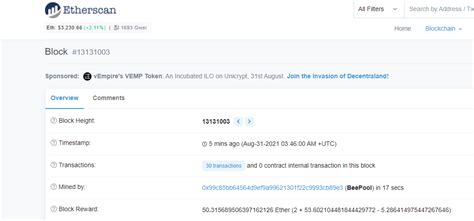Deciphering Ethereum Transaction Data: A Beginner’s Guide
As you continue to explore the world of cryptocurrencies, one of the often overlooked aspects of navigating the blockchain landscape is reading transaction data from services like Blockchain.info. In this article, we’ll discuss how to extract valuable information from these transaction records.
What is Ethereum Transaction Data?
Ethereum, a decentralized platform, uses a unique concept called the “blockchain” to record transactions and store data. This blockchain is essentially a digital ledger that tracks all of Ethereum’s transactions. When you make a transaction on the Ethereum network, it is recorded as a new block that is added to the blockchain.
Blockchain.info Transaction Data Structure
The structure of Ethereum transaction data varies depending on the type of transaction (e.g., payment, receipt, or smart contract execution). However, most transactions follow a similar format:
- Transaction ID: A unique identifier for each transaction.
- Sender Address: An address associated with the sender.
- Recipient Address: The address that receives the funds or data.
- Amount: The amount of cryptocurrency being sent (in wei, the native unit of Ethereum).
- Transaction Type
: Indicates the type of transaction (e.g. payment, receipt, or smart contract execution).
Extracting Transaction Data from Blockchain.info
To read transaction data from Blockchain.info, follow these steps:
- Go to a specific block: On Blockchain.info, click “Block Explorer” and then select the block you are interested in. You can also use the search bar to find blocks by address or hash.
- Select Transaction Type

: Select the type of transaction you are interested in (e.g. payment, receipt, or smart contract execution).
- Click “Details”: For each transaction, click the three dots next to it and select “Details”.
- View Transaction Details: The details page will display a table with various columns, including:
*Transaction ID
- Sender Address
- Recipient Address
- Amount (in whey)
*TransactionType
- Timestamp
- Filter and Sort Results: Use the filter options to narrow down the data by date range, block number, or transaction type.
Additional Tips
To better understand Ethereum transaction data:
- Use online tools: Sites like Etherscan.io, Blockscout.com, or SmartContractAnalyzer.net offer interactive charts and graphs to help you visualize transaction data.
- View smart contract interactions: Many Ethereum smart contracts have specific transactions that interact with other contracts or external services. Analyzing these interactions can provide valuable insights into the behavior of the network.
- Join the online community: Participate in forums like Reddit’s r/Ethereum, Stack Overflow, or cryptocurrency subreddits to connect with experienced developers and enthusiasts who share their knowledge and resources.
By learning about Ethereum transaction data on Blockchain.info, you will gain a deeper understanding of the underlying mechanics of the Ethereum network and be able to make more informed decisions about investing, trading, or participating in smart contract development.
